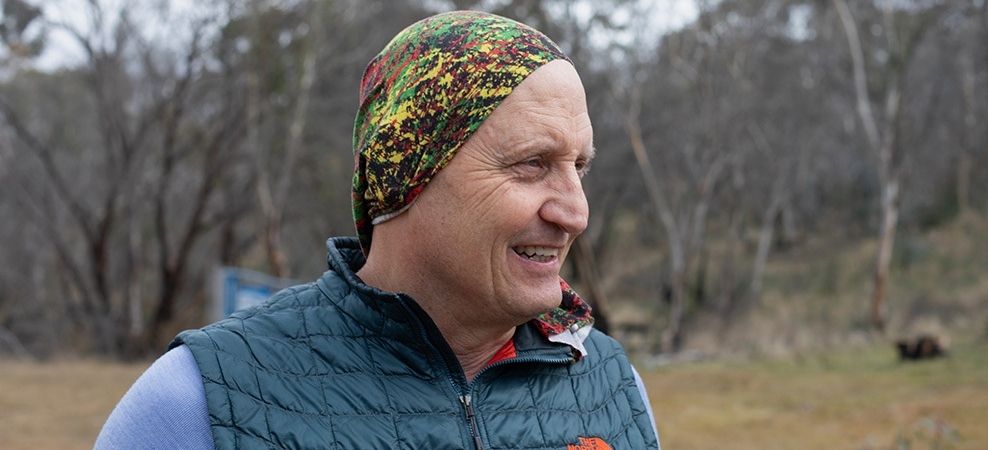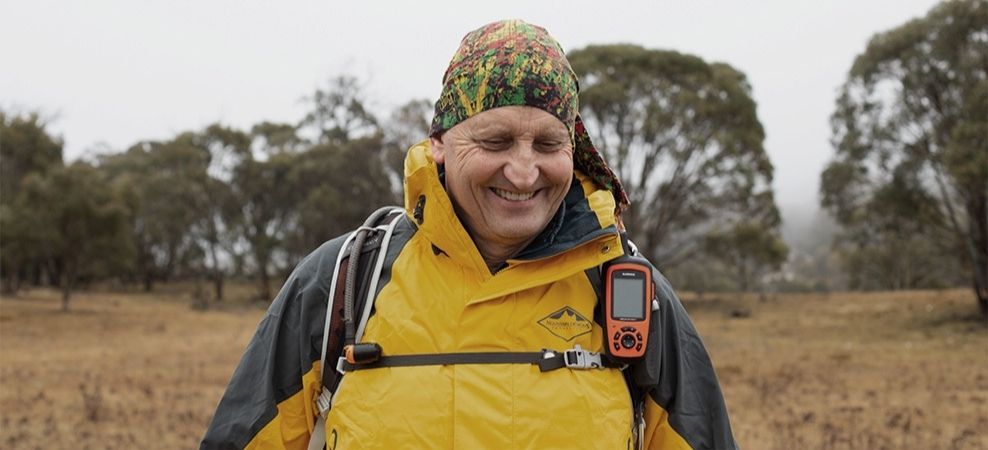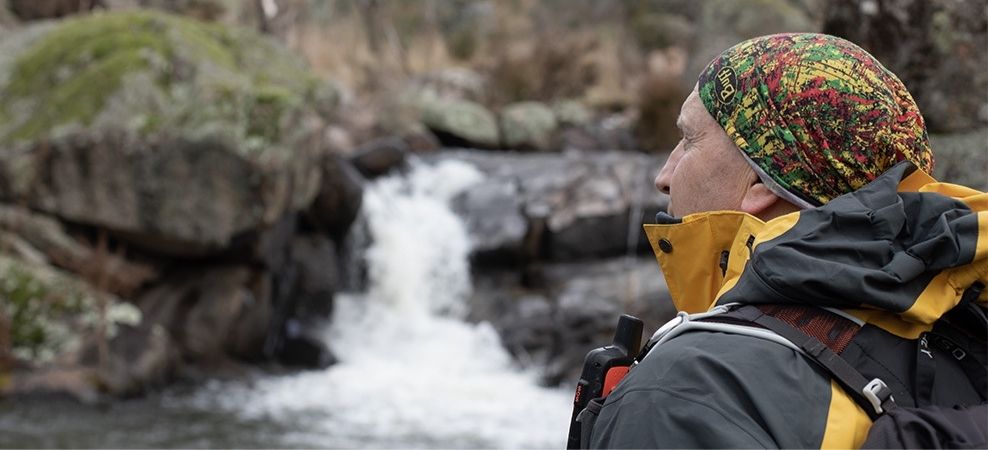Keen to get into hiking? Meet Tim Savage from Australian Hiker
Hiking can be a great way to challenge yourself physically while mentally allowing some space to focus inwards. Tim Savage from Australian Hiker chatted with us recently about why hiking is a great way to connect with the natural world, and why the cooler months are the best time to do just that.
Quick overview
- Hiking is a great way to connect with the natural world and take a break from the busy-ness of your day-to-day life
- Distance and location don’t matter - hiking can be accessible for all, regardless of physical ability, and even if you live in the middle of the city
- Shorter urban hikes in green spaces or walking trails in your local bushland are easy ways to get active while you dream and plan for your next adventure
This autumn and winter we’ve been bringing you stories from everyday Aussies who inspire us to winter well, and to take a holistic approach to optimal wellbeing by focusing on our physical, mental and emotional health. Here, avid hiker and nature lover Tim Savage tells us why connecting with nature through hiking is a great way to look after your physical health and focus your attention inwards.
Introducing Tim Savage – nature lover and hiking fanatic
Tim has been hiking for more than 40 years and has travelled all over the world in pursuit of his passion. He loves getting out into nature for any activity, whether it’s a for a short walk stroll or a multi-day or multi-week hike covering hundreds of kilometres. Together with his partner Gill, Tim launched the Australian Hiker website and podcast several years ago with the goal of sharing his knowledge and experience on everything from hiking trail reviews to gear – but even more so to help walkers who are just getting started to achieve their own hiking goals.
Hiking is more than just admiring a beautiful view
Tim believes hiking is more than a way of getting from A to B; it’s a way to connect with the world in an almost primal manner. He has a deep respect for nature and uses hiking as a tool to keep him connected with the natural world and silence all those busy modern-day distractions.
‘Although I’ve worked in an “inside job” for the last 10 years, before that I worked outside in horticulture and landscape architecture, which I loved. When you’re outside in nature you’re not surrounded by computer screens or phones ringing, and it’s so nice to take a break from all of that distraction.’
‘Being in nature gives me a chance to zone out, and I tend to look at the landscape as wallpaper. Being out in nature is my chance to be a part of the landscape. For me, it’s about being and interacting with the landscape, and not just enjoying a beautiful view and moving on.’
What is forest bathing?
While forest bathing might sound like an out there, esoteric concept, Tim explains that it is a well-recognised form of therapy and has many holistic benefits.
‘Forest bathing is a movement that emerged in Japanese culture in the 1980s. It’s based on the idea that immersing yourself in the forest and natural environment can have benefits for both physical and mental health.’
‘In the US, part of the rehabilitation program for some returned servicemen is to go hiking out in nature, where it offers them a chance to reset. Most people who go walking in the outdoors find a benefit for their mental health as it helps them to decompress.’
Distance doesn’t matter: you can always get out and go for a hike
Connecting with nature and forest bathing all sounds pretty good, but what if you can’t make it to your local national park to do a long day of hiking? Tim explains that hiking can be accessible for everyone, regardless of where you live or your physical ability. And, if you’re limited to how far you can travel from home there are lots of shorter urban hikes and bush trails to choose from, even if you live in the middle of the city.
‘My personal style of hiking varies. I’m quite happy to do a 1-2 km hike, a 1000 km hike, or anything in between. Australian Hiker is aimed at helping people who are new to hiking. Our aim is to remove the barriers that can stop people from enjoying it. We provide reviews of both short and long hikes and make sure we cover a wide range of hikes that are suitable for a variety of physical abilities. The distance doesn’t matter – you can always get out and go for a hike.’
‘Even if you live in the city, there are often lots of green spaces to explore on an urban hike. Even if your walk is only 500 metres or a kilometre long, you’ll still experience benefits for both your physical and mental health. And you know what? It’s smart to start with small hikes and build up your experience and level of fitness from there. My philosophy is, just start where you find yourself, and that applies to both your location and your fitness.’

Benefits of hiking in the cooler months
You might not feel like getting out of the house and going for a hike when the weather is cold or wet outside, but Tim says there’s lots of reasons why you should.
‘Winter is an awesome time to hike. It’s really pleasant hiking in the cooler months as it’s not too hot, and it’s much easier to warm up when the weather is cooler than it is to cool yourself down when hiking in the middle of summer if it’s very hot.’
‘I like to go for an early morning hike when the sun is rising over a heavy frost in winter. The first rays of light hitting the frost make everything sparkle and it is just magical.’
‘The landscape is also very different in the cooler months, with deciduous trees dominating the landscape alongside delicate winter flowering plants. Snow and rain can make the alpine eucalypts glisten on my local hikes in Canberra. Plus I always see more wildlife in the cooler months, because kangaroos and wombats are more active then. Best of all, there are fewer snakes in the cooler months, too!’.
Tim’s top hikes to do in cooler weather
While interstate travel might feel like a world away from your daily walk to the local park, that doesn’t mean you can’t start dreaming of and planning your future adventures. In fact, Tim usually plans for his hikes up to a couple of years in advance! He usually takes a solo-hiking holiday every winter, simply because he finds that a lot of walks are more pleasant in the cooler months.
Here are a couple of his top picks for hikes to do in cooler weather.
‘My favourite hike in the cooler months is also the longest track I’ve walked. The Bibbulmum track is 1000 km long, stretching from Perth to Albany through the scenic landscape of south-western Australia. I had one of my favourite days hiking ever on this track, where it had been raining most of the days I’d been walking, and I almost reached the end of a double rainbow in a valley. I enjoy hiking in the rainy climates of the cooler months – you don’t get rainbows without rain.’
‘The Larapinta trail in the Northern Territory is another top hike in the cooler months, when the daytime temperatures are much more pleasant for walking compared with the soaring temperatures that region is renowned for in the summertime.’
Dreaming of your next outdoor adventure? Check out this blog for some of the best Australian hikes to do in the cooler months.
Best ways to keep active
Tim doesn’t let the mild aches and pains he’s accumulated over the years slow him down. Here’s some of his best ways to stay active:
- Have a good routine that you commit to
- Walk and then walk some more. Tim does four hours of walking most days of the week by doing an early morning hike and then walking to work
- Do weight sessions and load bearing exercise to keep up your strength
- Cycle and swim to get your heart rate up
- Have a regular massage. This helps keep Tim in tip-top shape
- Take a glucosamine supplement for joint health
Take a walk on your own
Regardless of whether you walk for one kilometre or a thousand, Tim recommends hiking solo as a wonderful opportunity to focus inwards and have some time with your own thoughts.
‘I especially like to do long distance hikes solo to focus inwards. Over the five weeks I took to do the Bibbulmum track, I only spoke to eight people the whole time. It’s a luxury for me to be on my own with my thoughts and I love having the opportunity to think deeply. Long distance hikes allow me to do that.’
Being influenced by the wood element in Chinese medicine, Tim excels at setting clear goals and plans and undertaking challenges
‘I’m a big planner. I plan for some of my longer distance hikes over a couple of years before I go on them. My wife accuses me of overplanning, but I like to be prepared for what each day might bring on these solo trips. I can be flexible and change my plans if conditions change on the day, though. I love a good challenge and the hard work that comes from a hike, whether it’s over a short distance or a long one.’
Tim’s top tip for hiking in the cooler months
Here are some words of wisdom from Tim about how to rug up and prepare for a hike in the cooler months:
‘There’s no such thing as a bad hike, just bad clothing. Be prepared and dress warmly in the cooler months, layering up and wearing thermals or scarves and beanies if needed. Don’t let the cold or rain stop you from getting out there and enjoying your local environment, whether it’s urban hike or bushwalk in a national park.’
Listen to Tim’s podcast with Australian Hiker
You can check out the Australian Hiker podcast here including the latest episodes, which cover Tim’s recent winter adventure on the Tasmanian Trail, a 480 km walk right through the middle of Tasmania from Devonport to Dover. Discover Tim’s advice for hiking trails in Australia and around the world here




















